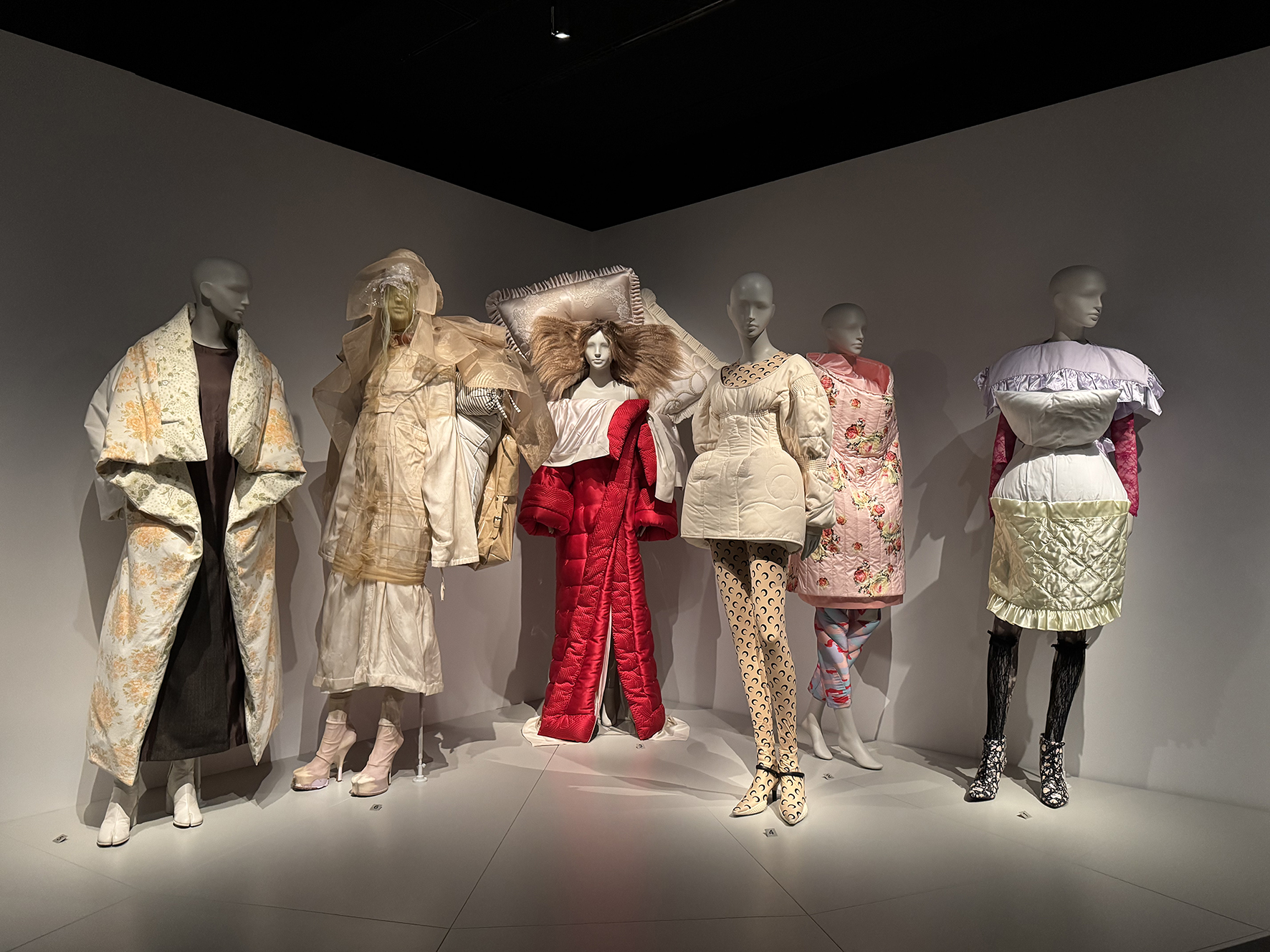What happens when the fine line between space and body blurs? When a woman’s silhouette echoes her drawing room, or the furniture becomes part of her dress?
MoMu’s latest exhibition, Fashion & Interiors: A Gendered Affair, explores how fashion and interior design have long mirrored one another. In the 19th century, domesticity was her domain. Her form, like her parlour, was something to be adorned.
Velvet cushions. Layered passementerie. Soft or warm materials. And women, often portrayed with the same decorative intent. In both painting and domestic interiors, the female body was frequently framed as ornament: poised, passive, and placed. A living extension of her surroundings. But the exhibition reframes this historical view of the female figure, offering new ways of seeing.
The story shifts as modernism enters the frame. Designers and architects such as Henry van de Velde, Lilly Reich and Le Corbusier began extending their spatial thinking into clothing. Interiors became a source. Sometimes even a material for what we wear. Importantly, the show invites us to look again at authorship. Lilly Reich, long overshadowed by her collaborator Mies van der Rohe, was instrumental in shaping some of the era’s most iconic furniture, including the daybed now famously known as the Barcelona couch. Just like with the Bauhaus, we are only now beginning to uncover how central women were in shaping design history.
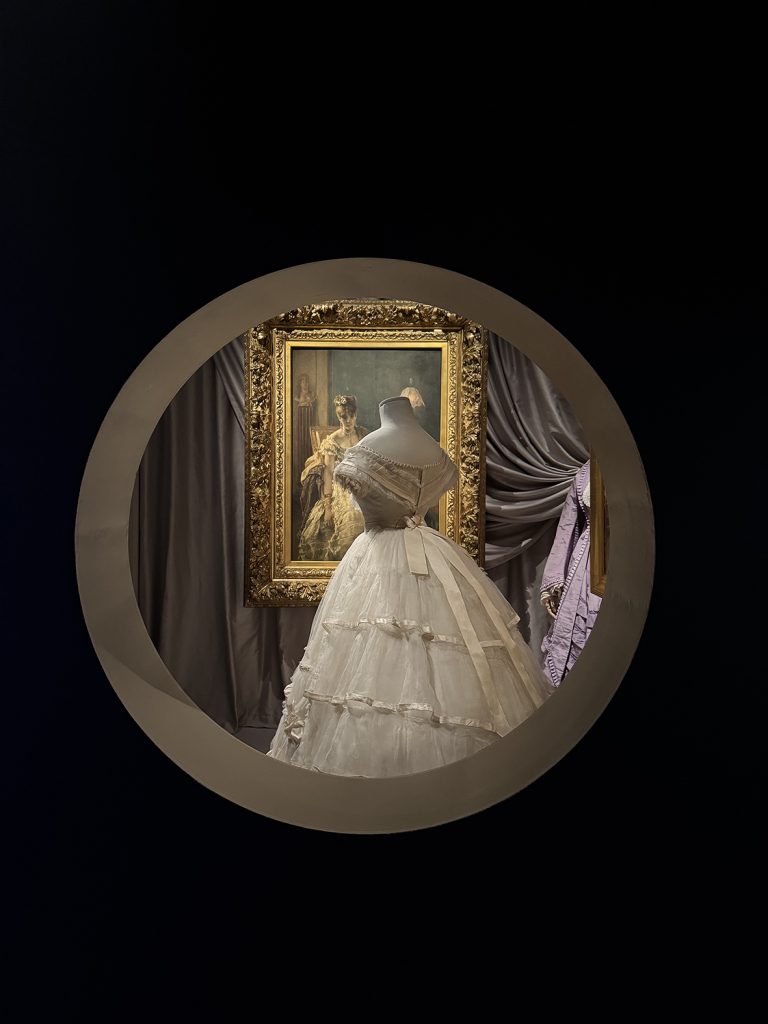
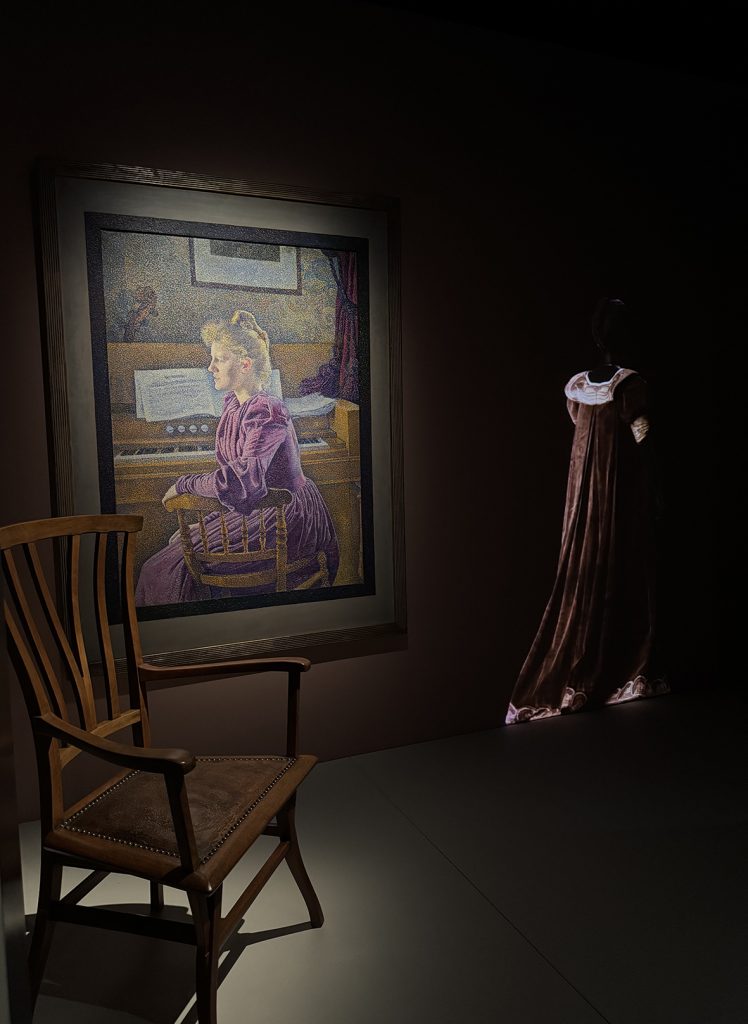
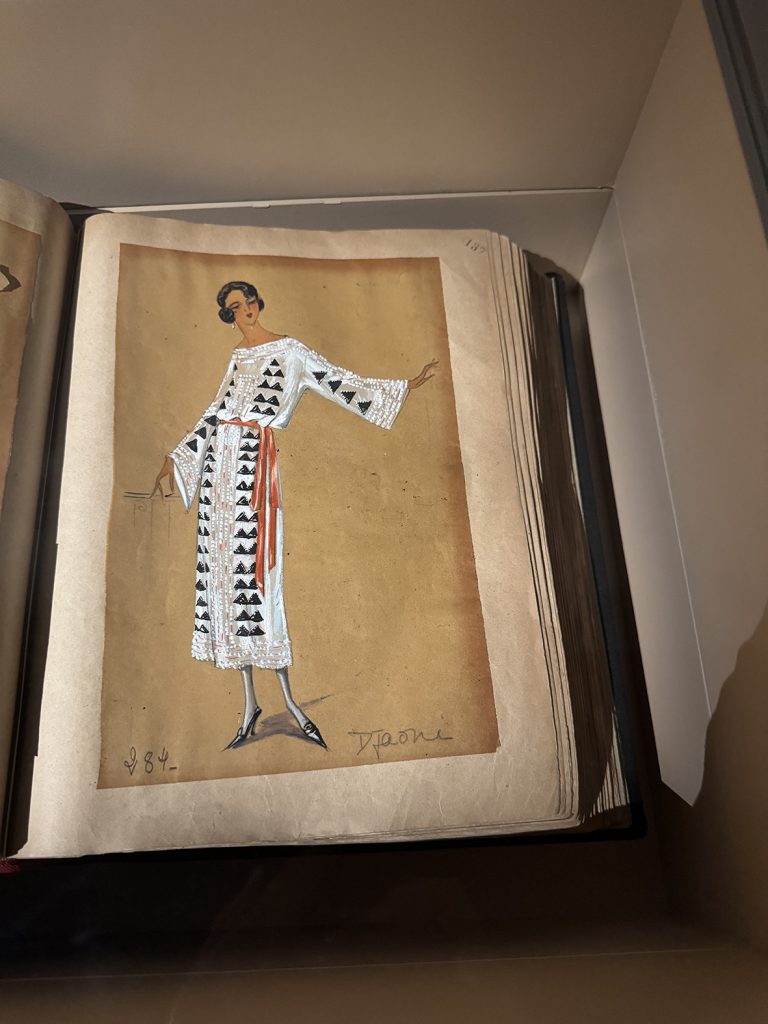
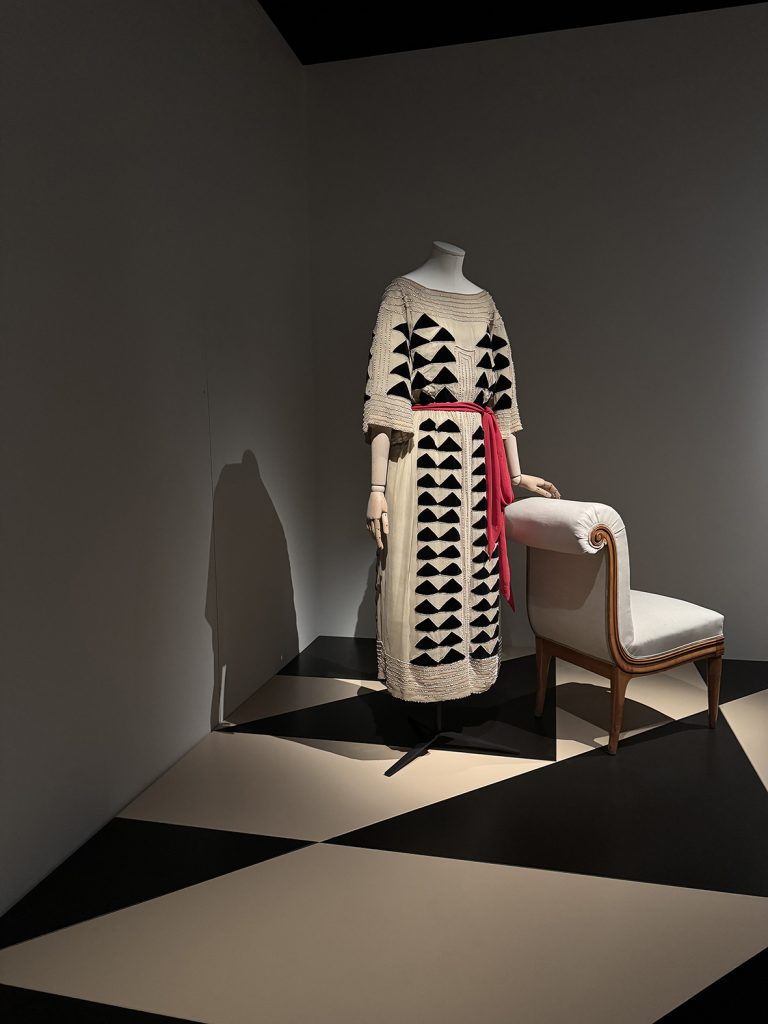
Painting by Alfred Stevens, dress from MoMu archive, painting by Theo Van Rysselberghe of Mevrouw Henri Van de Velde-Sèthe, dress Jeanne Lanvin.
At MoMu, these layered legacies unfold through rooms and vignettes that read like visual essays. They trace the ties between garment and object. Designers move fluidly between the world of the body and the world of things. Materials migrate: bedroom fabrics, curtain silks, upholstery jacquards. Sometimes out of necessity, because scarcity has long demanded invention. Other times, inspiration is tactile.
This becomes particularly resonant in the early 2000s. Global uncertainty and Y2K-fuelled anxiety prompted designers to explore ideas of protection and comfort. Viktor & Rolf’s Bedtime Stories collection placed the bed directly on the runway — soft duvets, pillows and all. Maison Martin Margiela, Comme des Garçons and Hussein Chalayan offered their own responses. Wearable furniture. Layered cocoons. Objects turned into garments, and vice versa.
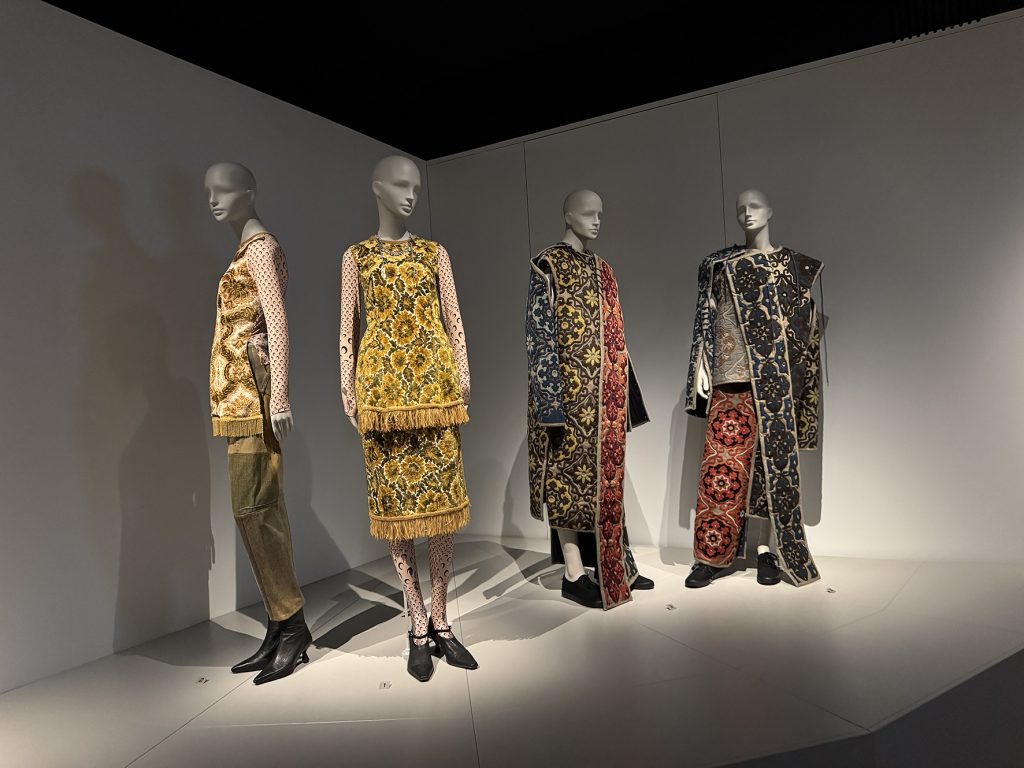
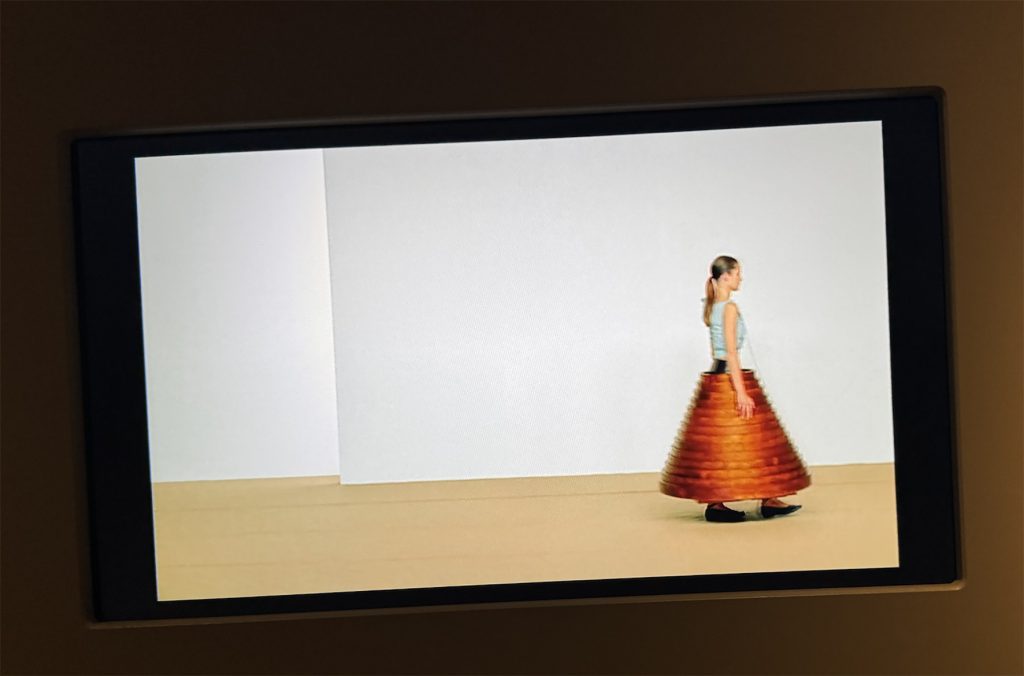
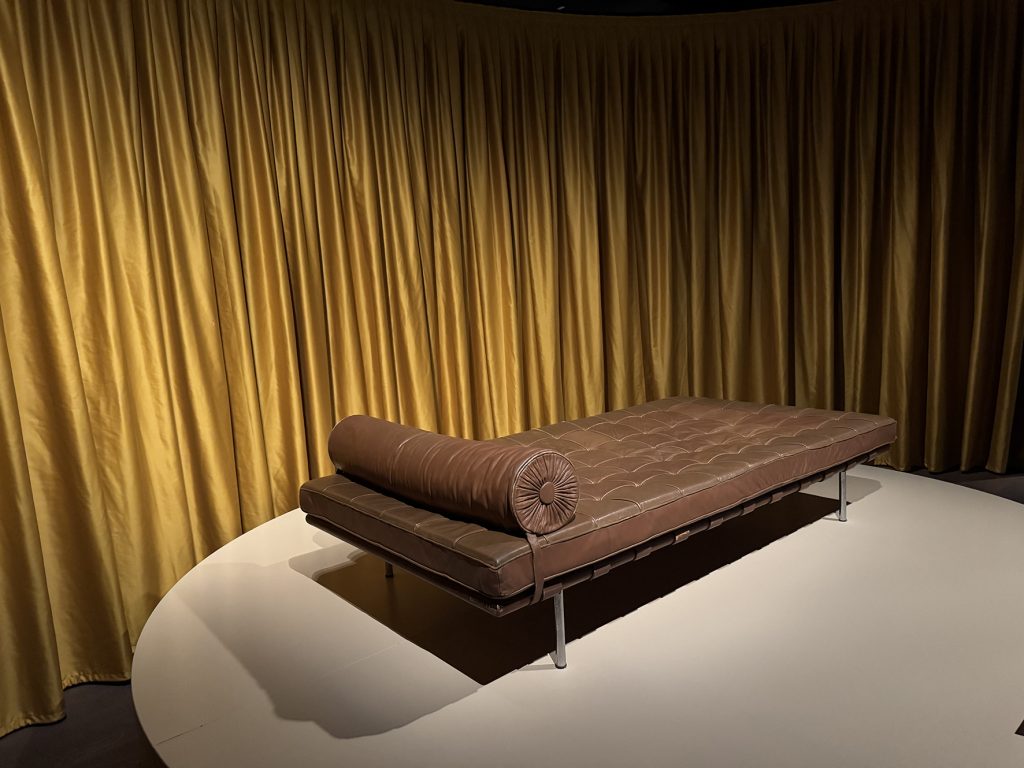
Looks by Marine Serre (AW20) and Craig Green (AW2017), filmstill Hussein Chalayan (AW2000), Daybed, design Lilly Reich and Mies van der Rohe.
One section stands apart: a visual biography in fragments dedicated to Maison Martin Margiela. From lab coats, original wooden Tabi forms and canvas pieces to deconstructed interiors and quiet highlights. His language of absence feels present throughout — a white-walled homage that speaks volumes.
Discover more about the exhibition: www.momu.be
All images taken by author, courtesy of MoMu Antwerp.
